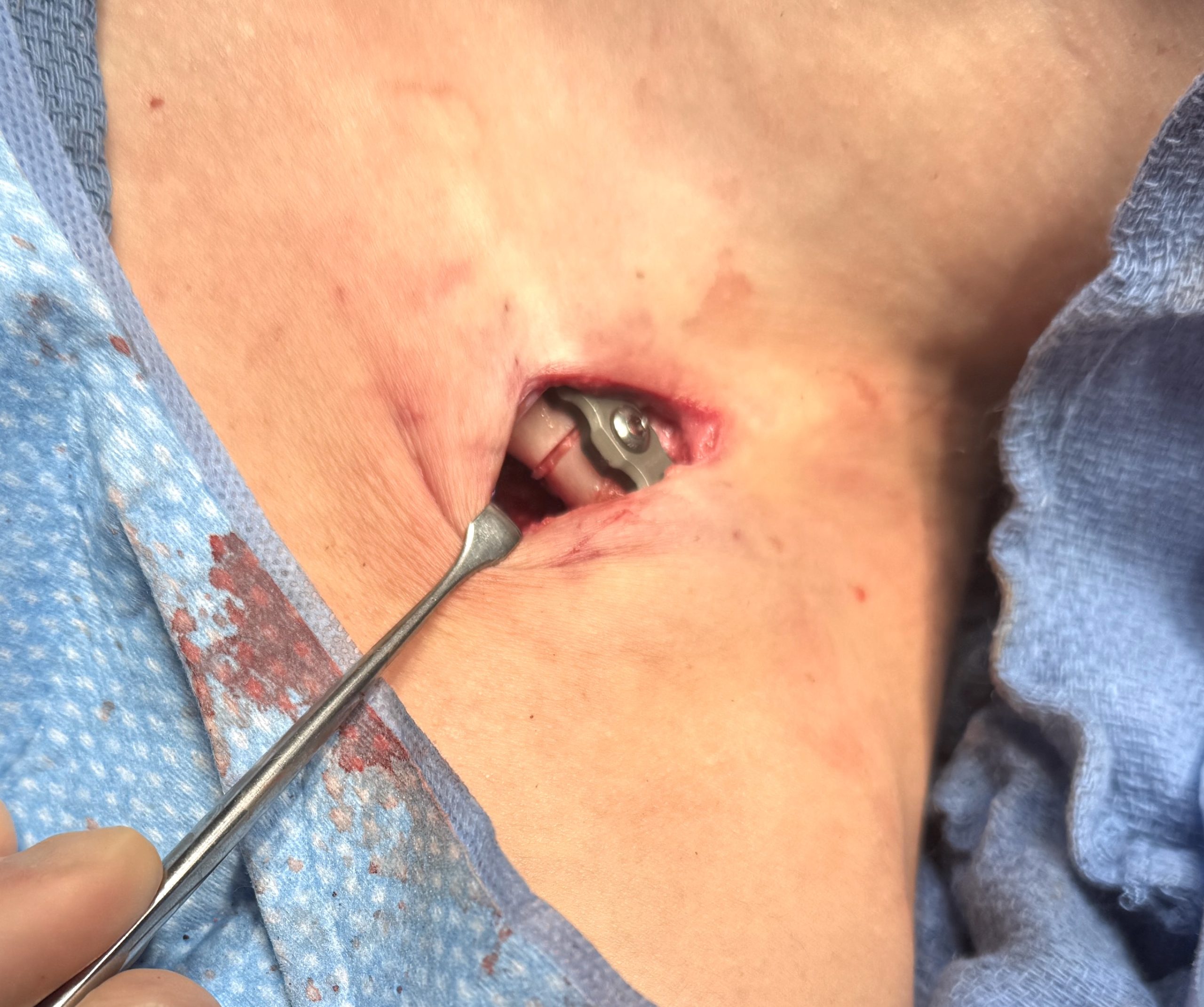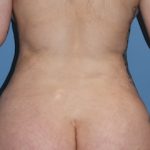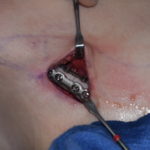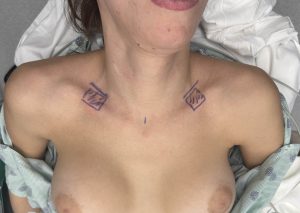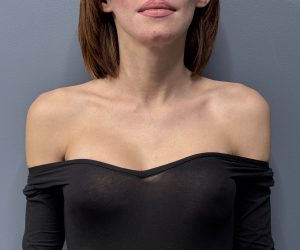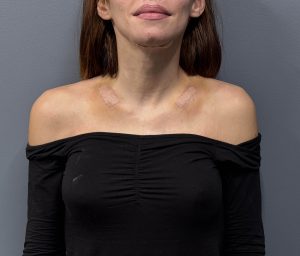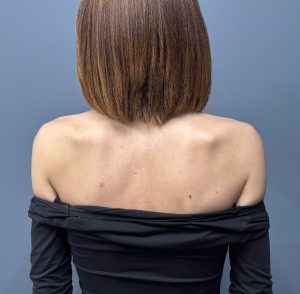Background: Shoulder narrowing surgery removes a segment of the clavicle bone in what appears to be a purely linear operation. While conceptually this is true the anatomic reality is that the clavicle bone is not straight. Its only straight section, the middle articular segment, has curved ends on either side. These reverse curved ends, once a section of the middle articular segment is removed, are brought closer together. This can pose challenges for plate and screw application.
In clavicle reduction osteotomies similar to clavicle fracture repair, s stout 3.5mm superior plate is the most important level of fixation. Its primary role is to prevent displacement of the two bone ends with arm extension. It has a less stabilizing force in rotation but still a significant one. To stabilize the plate to the bone bicortical screw placement is needed, ideally three screws on each side of the osteotomy. But in some patients the straight articular segment is less long than in others and applying a plate with 3 screws or each side may not be possible due to the proximity of the curved ends of the bone. In these cases a five hole superior plate is used. As the most likely risk for screw pullout is in the proximal bone segment this is the side that would have the larger number (3) of screw holes
One of the most technically challenging parts of putting the clavicle reduction bone ends together is getting a good approximation of them. The angle of the cuts at which the bone segment was removed are rarely perfectly symmetric. As a result when the two bone ends are put together and plated a partial bone gap is often seen. To optimize bone healing I like to take a small thin circular bone graft and wedge it into the gap if one exists.
Case Study: This female desired shoulder reduction with an anterior bideltoid distance of 49cms. Like all shoulder reduction surgeries the goal is to desquare the shoulders as well as reduce their width.
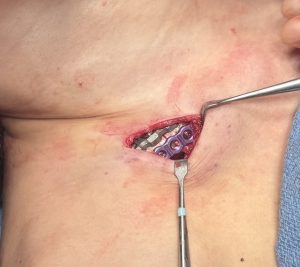
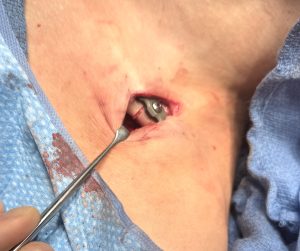
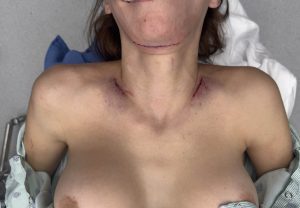
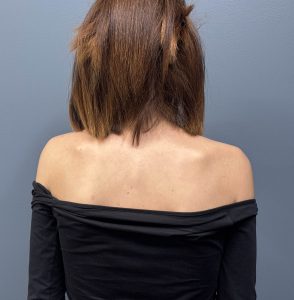
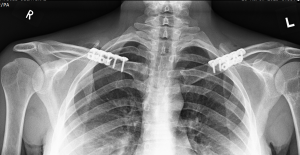
Clavicle reduction is a technically challenging procedure as it is performed through very small incisions. One unique feature of doing the surgery is that the length of the bone shortens and require fixation for stability and healing. With the shortening the length of the straight part of the bone becomes less. In some cases this may necessitate the use of a shorter superior fixation plate which should still be fine as long as the five screws have good bicortical purchase. Any small bone gaps, particularly when shorter plates are used, should be wedge bone grafted using the bone removal segments as the donor. Most such were grafts are only 1 to 2mms thick at most and only occupy one side of joined bone ends.
Key Points
1) The limits of bone removal in shoulder narrowing surgery is the pull in of the curved proximal and distal ends
2) The typical length of bone removed is 2.2.to 2.5cms per side which consistently allows for a very visible change in shoulder width and shape.
3) Clavicles differ greatly run shape and size amongst patients which affects how the fixation is applied on each side.
Dr. Barry Eppley
World-Renowned Plastic Surgeon

